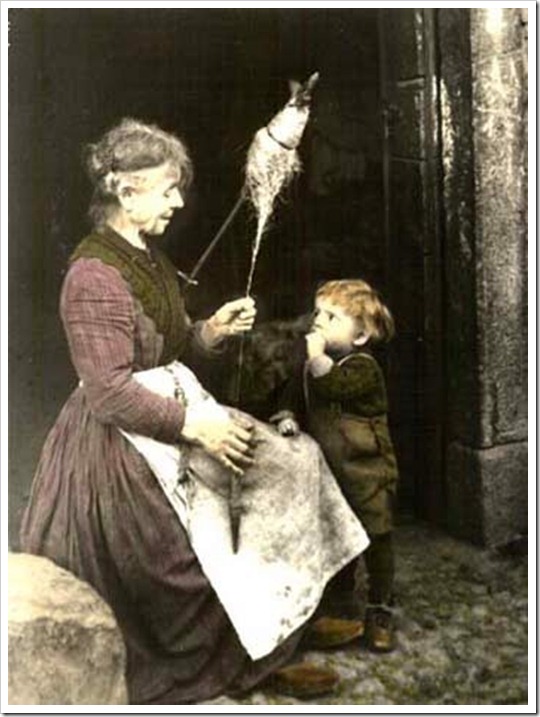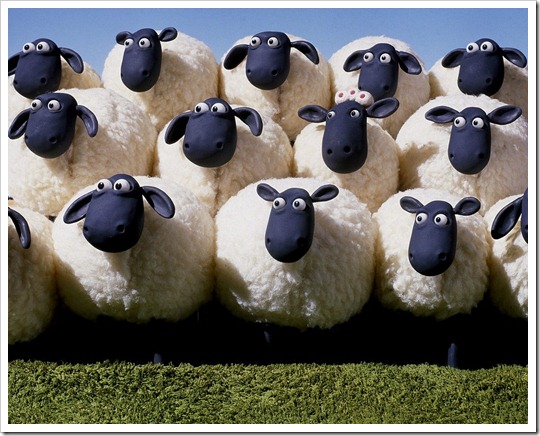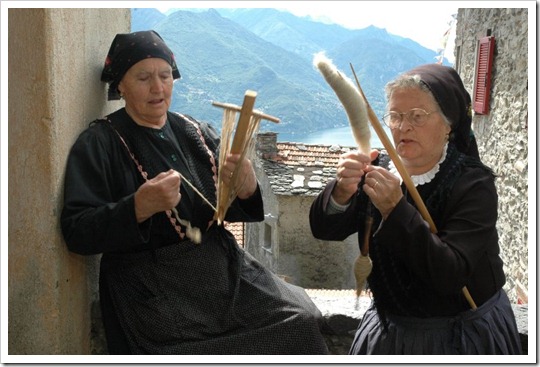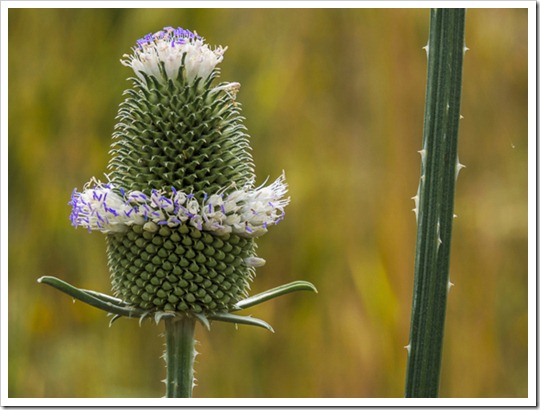Spinning Wool … The Hard Way! Posted by Serena on May 15, 2014 in Uncategorized
Have you ever tried to spin wool?
It looks so simple when you see an old peasant lady sitting there on a rustic wooden chair, turning the spindle with one hand and holding a distaff under her other armpit. But the truth is actually very far from this charming bucolic image. I can personally testify to this because I’m doing a course about antichi mestieri (old trades and crafts) which is aimed at finding ‘actors’ for the two main medieval festivals that take place here in Pontremoli every year: il Presepe vivente di San Francesco (the living Nativity scene of S. Francesco) in December, and Medievalis in August. This week we ‘learned’ how to spin and dye wool.
 |
| … hey, that looks easy! |
Theoretically, it seemed such an easy and natural thing to do!
Our teacher Andreina came along with her 87 years old mother Elvira to show us what to do. Theoretically, it seemed such an easy and natural thing to do, and very eagerly about twenty of us sat in a big circle around Elvira. But hard reality hit us as soon as we were handed la lana appena tosata da cardare (the recently sheared wool to card), which was suspiciously yellow, full of bits of grass and something else that we hoped was mud (was it really sheep dung?) … it definitely had a strong smell of selvatico (wildness) about it. We were told to gently open up the wool using our hands (no gloves!), being careful not to break the fibres and letting the dirt fall down onto our lap: mamma mia che schifo! (how disgusting!) Mercifully one of the organizers managed to find some old newspapers to put on our laps. “La lana non va lavata perché così si fila meglio” said Elvira (the wool should not be washed so that it’s easier to spin).
 |
| A picture of some sheep. N.B. no animals were harmed during the writing of this blog. |
Twenty minutes later I was still trying to twist my first 5 cm!
After half an our of hard work we succeeded in cleaning a small batuffolo di lana (wad of wool), which we rolled up and stuffed on the top of a long stick called la rocca (the distaff), which in turn had to be threaded through an apron belt. Since none of us had an apron and very few were wearing a belt, we were given a length of rope to tie around our waists instead. Having fixed the stick into our ‘belt’ and stuffed the wool on the top of the stick, we then started the spinning process, which is called filare la lana. We had to pull a little bit of wool from the bottom of the bundle, and start twisting it using both hands until we had a 10 cm yarn. Very simple, no? Twenty minutes later I was still trying to twist my first 5 cm!
 |
| The woman on the left is making a skein of wool on her guindolo |
… bang, clatter, rattle … etc.
Finally, we got to use il fuso (the spindle)! Andreina showed us how to fix the yarn to the fuso: “Fate due nodi come quando mettete su il lavoro a maglia” (Make two knots like when you start your knitting). Ok, this is simple … bang! … the fuso is on the floor! … let’s try again. Three attempts later I finally managed to fix it! Now for the spinning: with a tiny effortless movement of her arthritic right hand Elvira swiftly made the fuso spin neatly around, creating a nice thin thread. I had a go, and the fuso made a lovely big circle around my legs whilst wobbling all over the place, ending up on the floor and breaking those precious 10 cm of yarn over which I had sweated so hard! This was the recurring soundtrack for the rest of the evening, as one after another we all dropped our spindles … bang, clatter, rattle … etc. Shaking her head, Elvira said, rather drastically: “Se non hanno imparato fin’ora, non impareranno più” (“If they haven’t learned by now they never will”)
A few interesting notes:
The word cardare (to card) comes from il cardo, the thistle, specifically il cardo dei lanaioli (teasel), which was used to cardare la lana
 |
| Il cardo dei lanaioli |
Il fuso per filare (the spindle) should be made from a lightweight wood, while the fuso used to torciare la lana (the twisting of two threads of wool together, to make a thicker and stronger yarn) should be of heavier wood
The spinning movement is always clockwise and rotated with your hand at the top of the spindle, the twisting together of the two threads, or torciare is always anticlockwise and rotated with your hand at the bottom of the spindle
Once you have a good quantity of yarn, you make una matassa (a hank or skein of wool) using a tool called il guindolo. At this point you can finally wash and dye your wool. However, Andreina confessed to me that she washes her wool before spinning it!
 |
| All’arcolaio di Giovanni Segantini |
With the help of l’arcolaio (the spinning wheel) the skein is finally made into il gomitolo di lana (the ball of wool), all ready to begin your knitting … now that’s something that I am good at!

Build vocabulary, practice pronunciation, and more with Transparent Language Online. Available anytime, anywhere, on any device.




Comments:
Mamma:
I was hoping to see you in traditional dress, producing kilos of yarn for your weaving! Nevertheless, thank you for the blog. I am sure I haven’t seen that one before.
Serena:
@Mamma Hello Jo! You will have to come to Italy to see me dressed up in traditional dress, weaving hundreds of scarves on the loom 🙂
Love
Serena